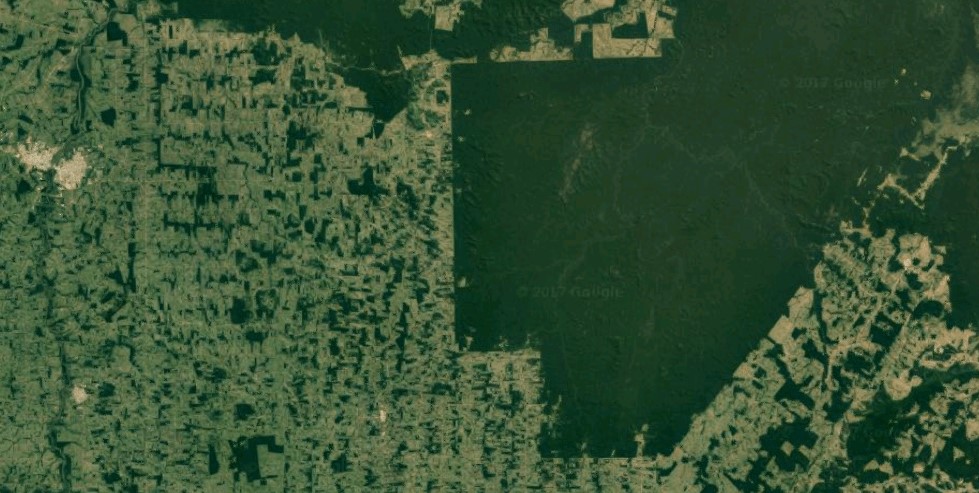The Story of the Surui Forest Carbon Project
In 2009, the Paiter-Surui of the Brazilian Amazon became the first indigenous people to save their forest through the use of carbon finance. The project slashed deforestation and jump-started sustainable agriculture projects across the territory, but faced opposition from religious extremists, illegal loggers, and diamond miners.
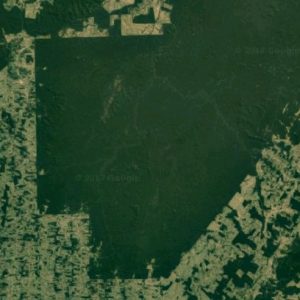
This post is excerpted from a recent Forest Trends Communities Initiative publication, The Surui Forest Carbon Project: A Case Study.
19 September 2019 | The Surui Forest Carbon Project was the first indigenous-led conservation project financed through the sale of carbon offsets. It dramatically reduced deforestation within the territory during its first five years of operation (2009-2014), but was suspended in 2018 after the discovery of large gold deposits in the territory sparked a surge in deforestation.
Before being suspended, the project generated 299,895 carbon offsets certified under the Verified Carbon Standard (VCS). This is equal to removing 64,000 cars from the road for a year. The project also became the first VCS-certified project to receive a Gold certification from the Climate, Community & Biodiversity Alliance (CCB), which evaluates social and environmental benefits beyond carbon. The Paiter-Surui used proceeds from offset sales to finance six sustainable community development initiatives that generate income and support traditional practices, such as the harvesting of medicinal plants, the creation of artisanal handicrafts, and other activities that enable indigenous peoples to live off the land while maintaining the forest.
In this case study, we first offer a brief history of the Paiter-Surui people, which sets the stage for a history of the project itself. We then provide an analysis of the challenges the project faces to this day, and implications for implementing REDD+ in other contexts.
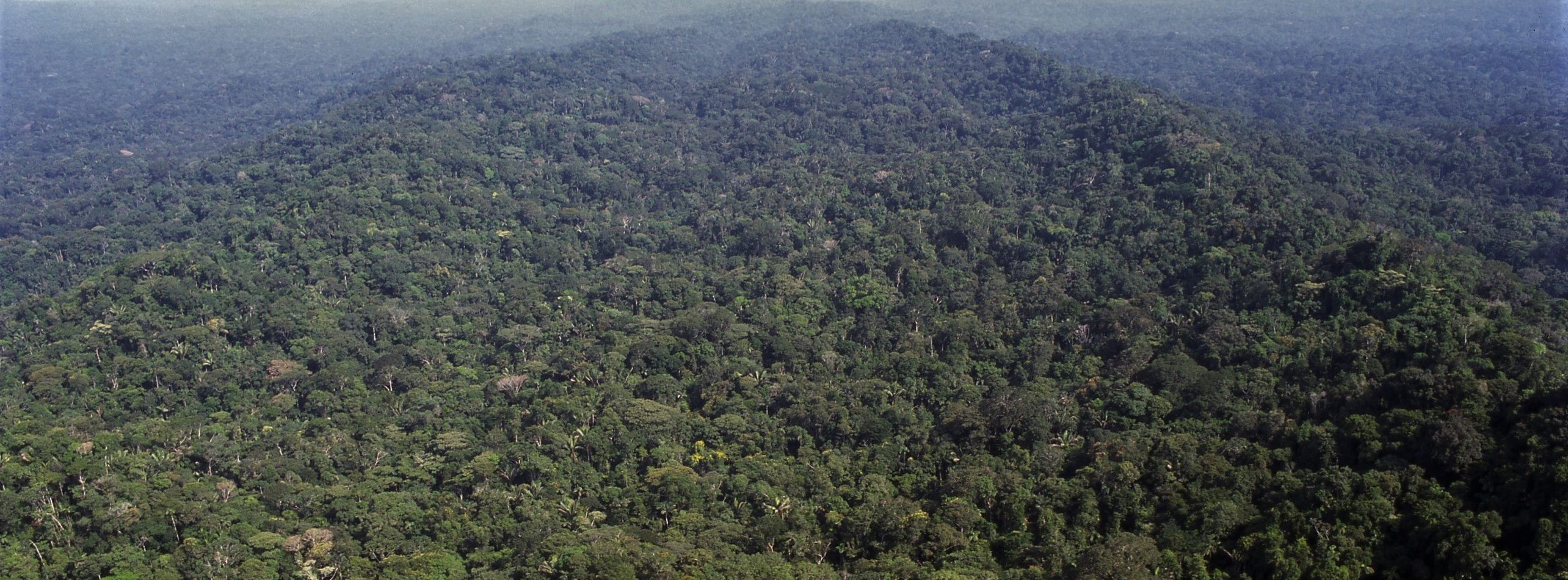
Indigenous people have contributed less to climate change than has any other segment of the population, yet they are among those most vulnerable to its impacts. At the same time, agriculture and forestry generate roughly 30 percent of all greenhouse gas emissions, while traditional land-management practices, such as agroforestry and permaculture, can dramatically improve the ability of forests, farms, and fields to absorb emissions. This has spawned the creation of a variety of mechanisms designed to support indigenous land stewardship. REDD+ is one of these mechanisms.
REDD+ stands for “Reducing Emissions from Deforestation and Degradation, plus conservation, sustainable management of forests, and enhancement of forest carbon stocks,” and in the strictest sense it refers to a specific set of mechanisms created under the United Nations Framework on Climate Change (UNFCCC) and enshrined in the 2015 Paris Climate Agreement.
The term also applies generically to voluntary initiatives developed outside the UNFCCC to support sustainable land management and conservation in developing countries. These projects often work by helping indigenous or other rural communities implement sustainable land-use strategies that both improve their livelihoods and reduce greenhouse-gas emissions. In such cases, they finance themselves by using recognized carbon standards to document the net impact on greenhouse gas emissions and generate certified carbon offsets that can be sold to emitters interested in reducing their carbon footprints.
The Surui Forest Carbon Project is an example of such a voluntary initiative.
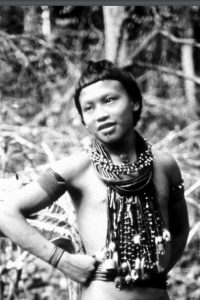
Although 1969 marked their first official contact with Brazilian authorities, Paiter histories describe contact – and conflict – with Europeans going back centuries. These histories have a profound impact on how the Paiter and other indigenous people interact with outsiders.
In the years after First Contact with Brazilian authorities in 1969, the Paiter suffered from smallpox, measles, and respiratory ailments against which they had no immunity, and their population plunged from 5,000 in 1969 to 290 in 1973. In addition to losing people, the Paiter seemed to lose their spirit as traditional medicines, so bound up in culture, failed to protect them, while new medicines brought by invaders did. This opened the door to missionaries, who converted many of the Paiter to Christianity, while an entire generation of chiefs fell to disease, and longstanding governance structures ceased to exist.
During this period, a young Kaban chief named Itabira formed a friendship with an agent from the government agency National Indigenous Foundation (FUNAI) named Apoena Meireles, who helped Itabira and other young chiefs navigate the Brazilian system. This made it possible for the Paiter to win demarcation of a small portion of their land in 1983 – far earlier than most other indigenous peoples – but it came at a price.
To secure their rights, the young Paiter leaders required frequent travel to the capital city of Brasilia. They financed these trips by letting loggers harvest the lucrative mahogany that grew in their territory. Even after demarcation, the Paiter continued to depend on informal logging – at first to support travel, but gradually as a means of sustenance. Village chiefs eventually began negotiating with loggers unilaterally, further eroding what remained of the old communal governance structures.
Three chiefs feature prominently in the creation of the Surui Forest Carbon Project.
Itabira Surui is the oldest of the three. A member of the Kaban clan, he was an early proponent of limited logging, but would eventually turn against the practice as he saw its environmental toll.
Henrique Surui, a member of the Gameb clan, is younger than Itabira and made a name for himself as a tough negotiator willing to use force against logging interests that tried to exploit the Paiter. At one point, Henrique and Itabira succeeded in persuading logging operations to conduct business through Metareilá, an organization formed to represent the Paiter’s interests outside the territory, instead of directly with individual chiefs. This ensured fairer prices while sharing income.
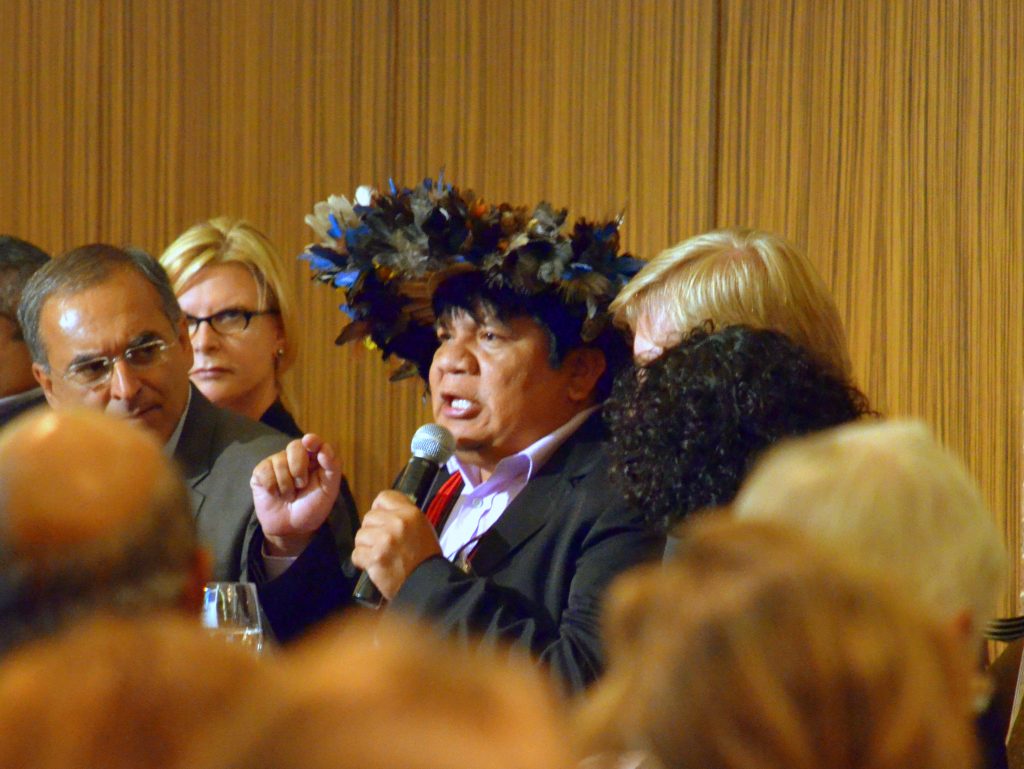
Finally, Almir Surui, also of the Gameb, opposed logging from an early age, and in 1988 he became the first member of his people to attend university. In the early 1990s, he began representing the Paiter in an indigenous federation called CUNPIR (Coordination of Nations of Indigenous Peoples of Rondônia, Southern Amazonas and North Mato Grosso (Coordenação das Nações de Povos Indígenas de Rondônia, Sul do Amazonas e Norte do Mato Grosso). He would eventually become the proponent of the forest carbon project.
CUNPIR was backed by a Catholic organization called the Indigenist Missionary Council (CIMI), which had earlier played a key role in helping indigenous people earn demarcation for their lands. By the time Almir joined CUNPIR, however, CIMI had formally adopted a policy of opposing indigenous engagement with the larger market economy, and it often worked through indigenous organizations like CUNPIR to execute this policy. As Almir became increasingly engaged with Planafloro and the World Bank, he found himself frequently at odds with CIMI.
By 2005, more than 10 percent of the Paiter’s territory had been logged, and several clan chiefs began exploring the potential for other extractive activities – primarily the mining of diamonds and gold. At the time, Paiter leadership concluded that both logging and mining were economically unviable and environmentally destructive.
Almir, meanwhile, had learned about “Life Plans” that were being developed by other indigenous peoples across the Amazon. Life Plans are as diverse and varied as the people of the Amazon themselves, but they almost all focus on ways of developing a sustainable indigenous economy by reviving dead and dying traditions. Many of these traditions are related to agricultural practices that evolved over thousands of years and have proven to be more resilient (but less efficient) than modern agricultural methods that was introduced into the Amazon in the last century.
Working with two NGOs, the Amazon Conservation Team (Equipe de Conservação da Amazonia, or ECAM) and the Association of Ethnic and Environmental Defense (Kanindé), Almir created an ambitious plan for developing a Paiter Life Plan that incorporated the Forum of the Clans (and, later, the Surui Parliament). ECAM (Called ACT Brazil at the time) secured a $250,000 grant from the Annenberg Foundation to begin the work of mapping resources, traditional hunting grounds, and areas of cultural significance across the territory. These were essential first steps in developing a bottom-up Life Plan.
The Paiter Surui’s territory, the Sete de Setembro. Within the territory, forests are largely intact, compared to the surrounding lands.
The Annenberg grant would provide income to Paiter members who participated in the mapmaking process, and Almir saw it as an opportunity to wean the community off of logging as a source of income. He presented the idea to the Forum of the Clans in late 2004, and 14 out of 18 chiefs endorsed a moratorium on logging that would last throughout the mapping process. Logging quickly ground to a halt, prompting some of the loggers to pool their resources and put a bounty on Almir’s head.
Such threats were not taken lightly. Loggers had earlier assassinated a high-profile Paiter chief named Jamne, and Apoena Meireles had been murdered in 2004. The indigenous rights campaigner Dorothy Stang, who was a Catholic nun, was murdered by ranchers in February 2005.
In order to secure funding for further development of the Life Plan, and to keep Almir out of harm’s way, ECAM began sending him on fundraising journeys abroad.
While in San Francisco for one of these fundraising trips, Almir approached Beto Borges of Forest Trends Association, initially with the goal of securing a grant. Borges instead suggested using carbon finance to secure long-term funding for reforestation, with proceeds used to subsidize other sustainable land-management practices, such as fish farming and the harvesting of non-timber forest products.
Consultants brought on board suggested that the threats to existing forest were so clear and present that the Paiter could possibly generate “avoided deforestation” (the term in vogue before “REDD+”) offsets. But there was a catch: avoided deforestation was not recognized under the CDM, so the Paiter would have to pilot untested methodologies in the voluntary carbon market.
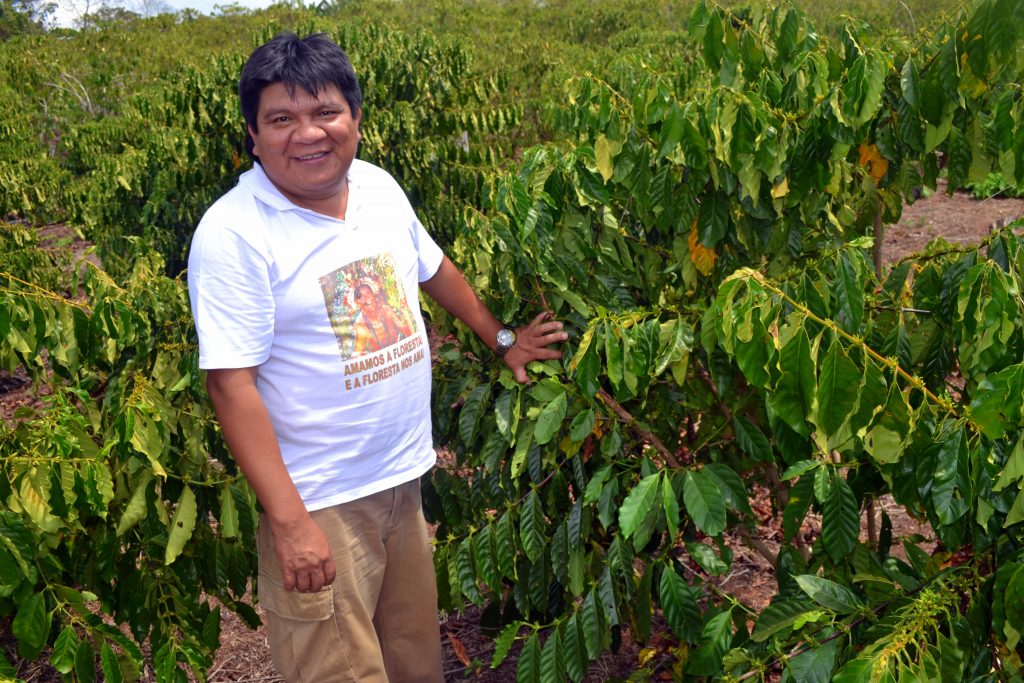
By this time, a number of NGOs including Forest Trends, ECAM, Metareilá, Kanindé, Idesam, and the Brazilian Biodiversity Fund (Fundo Brasileiro da Biodiversidade, or Funbio) were on board. The project also had backing from a number of funders: the United States Agency for International Development, the Norwegian Agency for Development Cooperation, the Gordon and Betty Moore Foundation, the David and Lucile Packard Foundation, the Overbrook Foundation, the Blue Moon Fund, the World Bank Development Grants Facility, the Global Environment Facility, the Citi Foundation, and the United Kingdom Department for International Development.
Despite their diversity, all known indigenous communities across the Amazon practice some form of the principle of “Buen Vivir” or “Sumaj Kausay,” roughly translated as “Living Well,” for governance of their natural resources, based on communal decision-making. The central goal is the use of community resources in a way that reflects cultural values and self-determination. In accordance with this principle, the project partners drafted and signed a Memorandum of Understanding to pilot a forest carbon project. The Paiter clans designated Metareilá as the lead, with other organizations playing supporting roles.
The partners drafted a plan for executing the project, and for holding all income in a segregated trust fund, maintained by Funbio on behalf of the Paiter people, as exercised through Metareilá.
Almir presented the proposal to the Forum of the Clans, and it was overwhelmingly approved. Henrique Surui, the leading proponent of increased logging in the territory, was absent, on an extended sabbatical due to health issues.
In June of 2009, all of the acting chiefs signed a cooperation agreement, launching an extensive process of education and engagement to ensure the free, prior, and informed consent (FPIC) of all the Paiter people. This involved visits to all 26 villages. In 14 of the villages, a series of 10 educational seminars were hosted by ECAM, Kanindé, and Metareilá, with buses made available to bring people from isolated villages to the meetings.
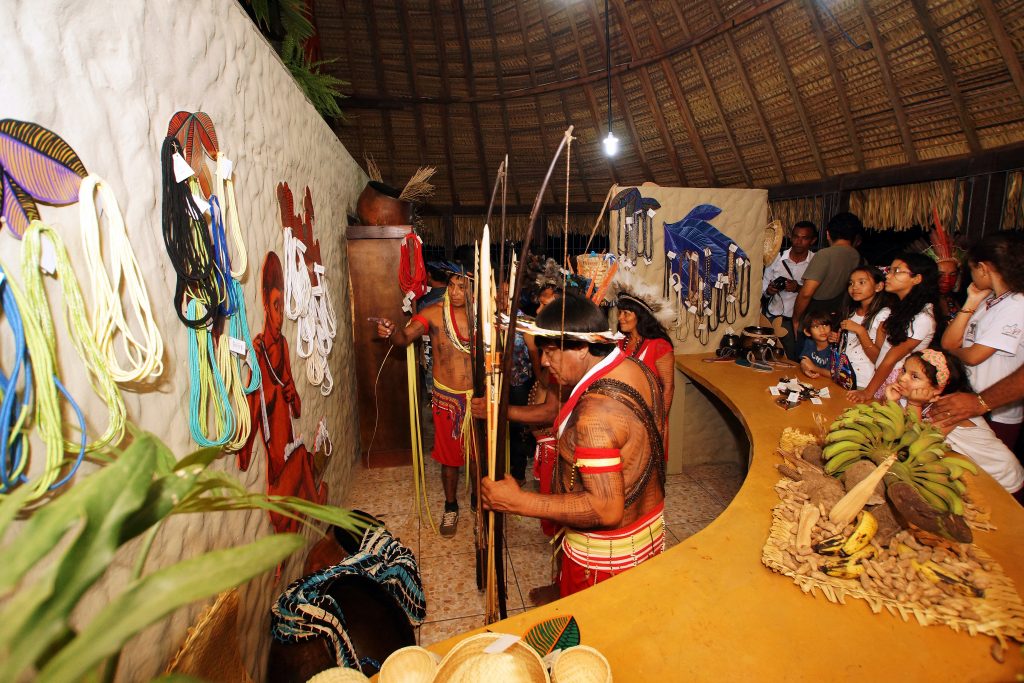
In June 2012, VCS auditors “validated” the project, meaning they signed off on its design and recognized the baseline. The TISS straddles two states, Rondônia and Mato Grosso, both of which endorsed and approved the project. At the federal level, FUNAI and the Attorney General’s Office formally endorsed and approved the project. Although the Ministry of Environment was encouraging behind the scenes, it declined to either endorse or criticize the project, saying it lacked the jurisdiction to do so.
The project developers decided to develop a methodology under the emergent Voluntary Carbon Standard (now the Verified Carbon Standard), which focuses almost exclusively on carbon stocks. The project would seek concurrent certification under the Climate, Community, and Biodiversity (CCB) Standards, which focuses on social and broader environmental impacts beyond carbon.
To earn CCB certification, the project had to go beyond standard FPIC procedures and ensure that all four of the Paiter clans (the Gãbgir, the Kaban, the Makor, and the Gameb) were engaged in the project, and were able to set the terms of their own contributions to avoided deforestation. All of the clans took part in agroforestry training. But the Gãbgir won approval to lead an online communications and archiving initiative, while the Makor led an effort to restore lost knowledge of medicinal plants. Others pursued fish farming, organic coffee, and the commercialization of various non-timber forest products.
The next step was the “verification” phase, where auditors from the Institute for the Management and Certification of Forests and Farms (Imaflora) and the Rainforest Alliance verified that the Paiter were, in fact, executing the plan as validated. Here the project encountered its first challenge.
To support the process, Idesam began reviewing satellite images and found that a 2010 fire in the territory had destroyed more forest than the Paiter had realized. As the verification process continued, the number of offsets was adjusted downward. The first tranche of offsets was verified in June 2013.
The sale of offsets proved to be another challenge – largely because the world had failed to reach a binding global agreement under the UNFCCC, meaning there was little demand for offsets. Fortunately, the charismatic nature of the project made it possible to sell offsets at above-market prices and attractive terms with high-profile buyers, including Brazilian cosmetics giant Natura Cosméticos and the 2014 Football World Cup in Brazil.
Proceeds from the sale went into the Surui Fund, a trust fund housed by Funbio. The money was kept in a segregated account, and used to pay for forest monitoring and protection as well as the myriad projects chosen by the clans outlined above. Some was used to provide management training and capacity building for Metareilá.
Although the Paiter government had endorsed a logging moratorium to support the carbon offset project, this was broken when Henrique Surui returned from sabbatical in 2011 and resumed his logging operations, mostly along an entryway known as Line 14.
Paiter patrols operating on behalf of Metareilá discovered the operation soon after it began. They traced the logging trucks to nearby mills, and identified the small group of Paiter, including Henrique, who were collaborating with the loggers. Lacking law enforcement authority of his own, Almir presented the evidence to local authorities, who refused to act.
The Paiter-Surui Parliament then formally called Henrique to account in 2012. When he refused to cooperate, they appealed to President Dilma Rousseff and to Marta Azevedo, then president of FUNAI. Those appeals were also ignored, and logging continued along Line 14.
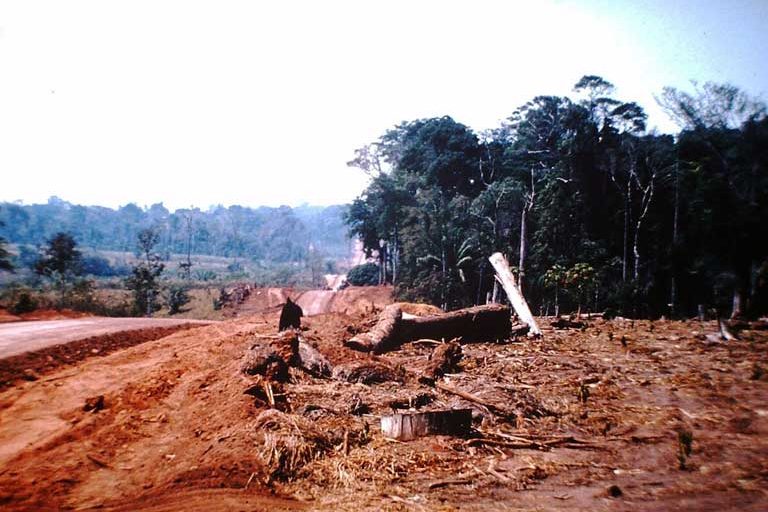
The pro-logging faction also had tremendous support from CIMI. By its own admission, CIMI sought to undermine the project because it believed that carbon offsets and the green economy distorted the relationship that indigenous people have with the land – despite the irony that supporting logging exacerbated wealth distortion among the Paiter, while the conservation faction that CIMI opposed was trying to share resources equitably.
Meanwhile, some of the chiefs complained that Funbio was slow to disburse payments from the Surui Fund, and that too much authority had been concentrated in Metareilá. Almir conceded that the payments had been slow, which he attributed to a lack of documentation provided by the clan seeking funds. Still, he agreed to make the accounting process more transparent. Henrique, however, accused Almir of siphoning off funds – an accusation that proved unfounded, but which caused some of the chiefs in the logging faction to drop out of the project. A revamped accounting process was initiated in February 2015.
Unbeknownst to other members of the Paiter, the logging faction had continued to explore the possibility of gold and diamond mining. It often worked with outsiders who had entered the territory illegally. In February 2015, Metareilá documented and reported several instances of illegal alluvial mining (known as garimpo in Portuguese). Garimpo is environmentally devastating. It involves digging up massive amounts of soil, using mercury to draw out any gold, and then burning the residue.
This time, authorities responded, first with a surveillance mission by FUNAI, and then with a raid on an illegal timber operation outside the territory. But by then the mining operations were too widespread to control. At some undetermined point in 2016, diamonds were also discovered, and Paiter authorities again alerted the federal police, who in turn raided the mines and documented extensive environmental damage.
According to The Guardian newspaper, the police placed blame for the activities squarely on the shoulders of Henrique Surui and the logging faction.
Deforestation accelerated in 2016 and 2017, as Paiter members who colluded with miners used the resulting income to purchase cattle and clear forest for pasturelands within the TISS.
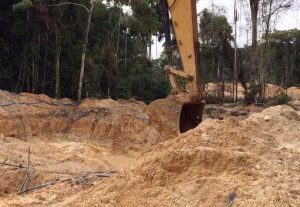
The forest loss forced the Paiter to put the carbon project on hold, since they could no longer guarantee the results set out in their project plan. The new mining and agriculture ventures also created massive income discrepancies in the community.
In September 2018, after extensive deliberation, the project partners formally suspended the offset project, concluding that it would be impossible to proceed.
The Surui Forest Carbon Project dramatically reduced deforestation within the TISS during the first five years of its operation. It also funded six self-sufficient community development initiatives that continue to provide income to this day. It achieved these successes despite the lack of compliance-driven demand for carbon offsets, as well as a lack of law enforcement and the presence of criminal enterprises and ideologues intent on undermining the project by sowing conflict among the people.
In the end, however, the project succumbed – for the time being, at least – to the tragedy of the commons that REDD+ was created to assuage. Although the project required, and received, near-unanimous support from the Paiter people, it was undermined by a small contingent of loggers, miners, missionaries, and colluders pursuing their own individual interests.
At a macro level, the Surui project had contributed roughly 15 percent of its offsets to a global buffer pool operated by VCS. When it was suspended, Verra offset the loss by retiring offsets from its buffer pool. From an environmental perspective, the project’s failure did not lead to an increase in emissions.
This article is excerpted from a longer publication, The Surui Forest Carbon Project: A Case Study, published by Forest Trends’ Communities Initiative.
he author would like to thank Beto Borges of Forest Trends’ Communities Initiative, Vasco van Roosmalen of Equipe de Conservação da Amazônia (ECAM), Mariano Cenamo and Pedro Soares of the Institute for the Conservation and Sustainable Development of Amazonas (IDESAM), and Jacob Olander of EcoDecisión for their contributions to this case study.
This case study is made possible by the generous support of the American people through the United States Agency for International Development (USAID). The contents are the responsibility of Forest Trends and do not necessarily reflect the views of USAID or the United States Government.
Please see our Reprint Guidelines for details on republishing our articles.


